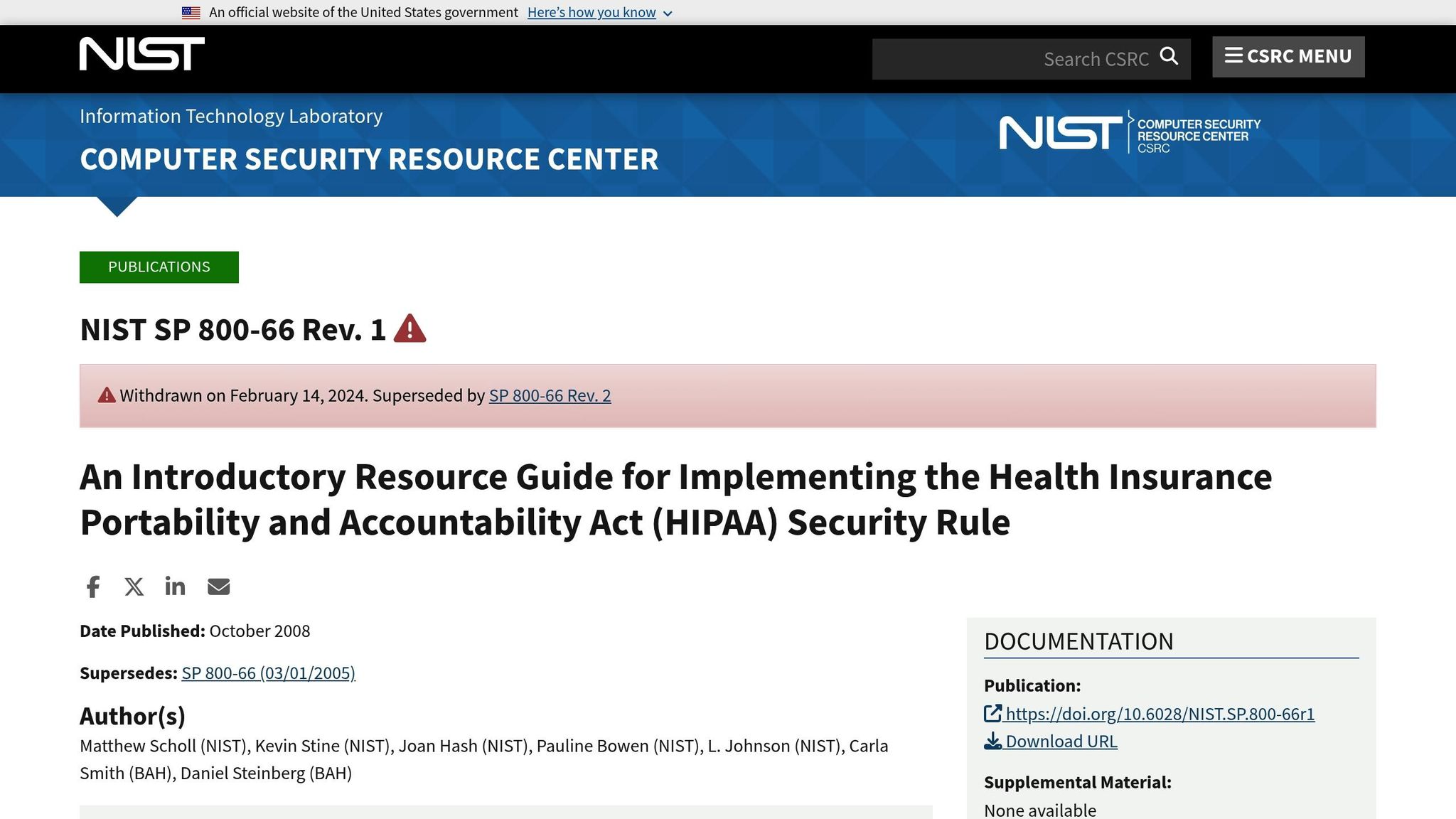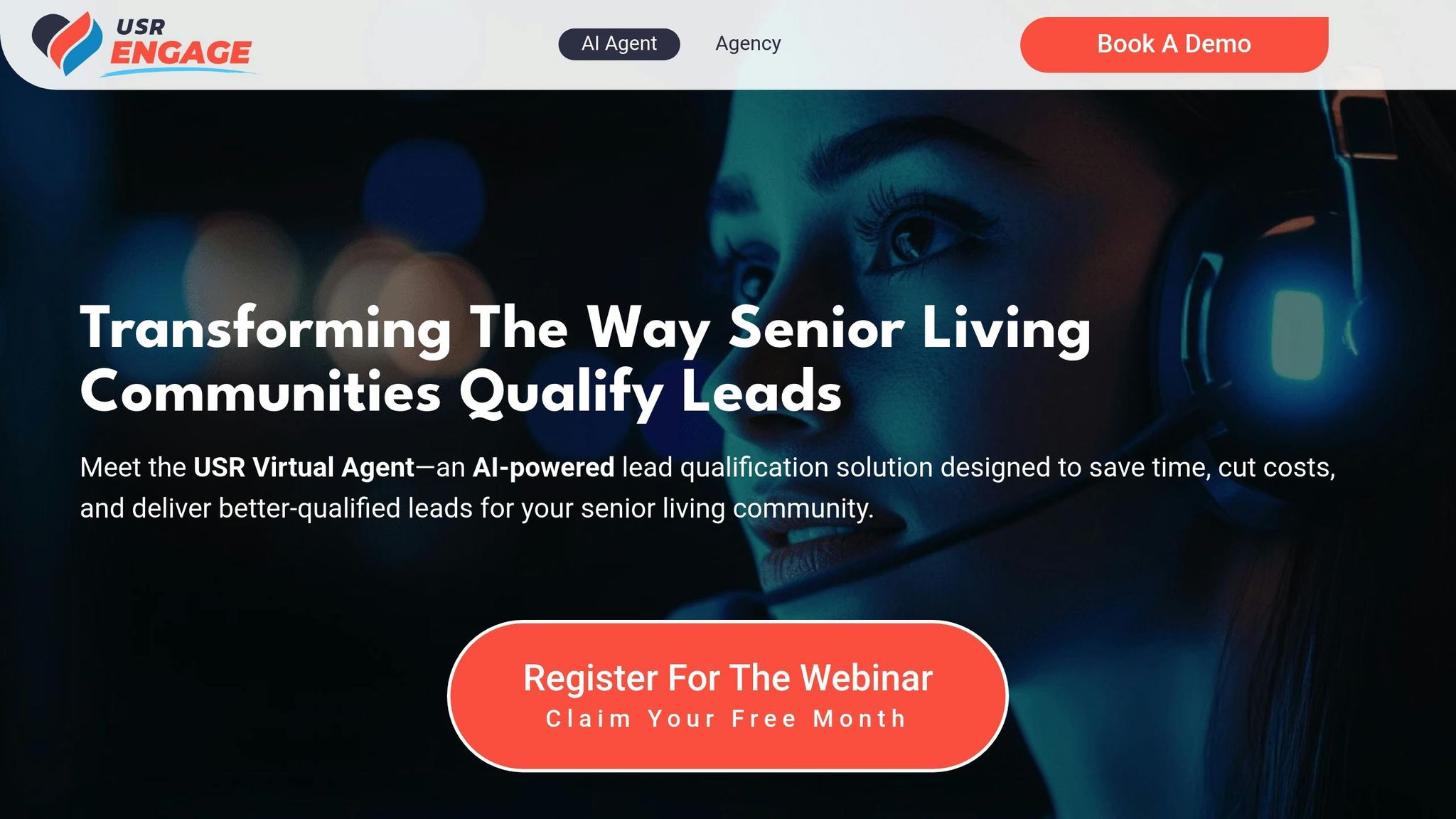Managing resident data while staying HIPAA-compliant is a growing challenge for senior living communities, especially when integrating third-party software. Here’s what you need to know:
- Key Requirements: Secure data with encryption, control access with role-based restrictions, and sign a Business Associate Agreement (BAA) with vendors.
- Common Risks: Integration points can introduce vulnerabilities like API weaknesses, data transit gaps, and outdated systems.
- Actionable Steps:
- Conduct vendor assessments for HIPAA certifications.
- Implement strong security controls, such as AES-256 encryption and multi-factor authentication.
- Train staff regularly on compliance and data handling.
- AI Tools: Solutions like the USR Virtual Agent ($497/month) automate tasks like lead qualification while ensuring HIPAA compliance.
How to Apply NIST SP 800-66 to Meet HIPAA Third-Party Risk …

HIPAA Rules for Third-Party Software
Using third-party software in senior living systems requires strict adherence to HIPAA rules to protect resident data during transmission, storage, and processing.
Protected Health Information Types
HIPAA defines Protected Health Information (PHI) as any health data that can identify an individual and is handled by covered entities. For senior living facilities, this includes:
| Information Category | Examples of Protected Data |
|---|---|
| Personal Identifiers | Names, Social Security numbers, addresses, birth dates |
| Medical Records | Diagnoses, medications, treatment plans, lab results |
| Financial Data | Payment records, insurance details, billing history |
| Care Documentation | Daily care notes, therapy sessions, dietary needs |
| Communication Records | Emails and phone calls with health information |
Software dealing with these types of data must use encryption for transmissions and secure storage methods to prevent unauthorized access. Facilities must also meet additional administrative and technical HIPAA requirements when implementing such systems.
Senior Living Facility Requirements
Senior living facilities have specific responsibilities when integrating third-party software:
1. Business Associate Agreements
Facilities must sign a Business Associate Agreement (BAA) with each vendor, outlining responsibilities for PHI protection and breach accountability.
2. Access Control Measures
Strict access controls for PHI are essential. These include:
- Role-based access restrictions
- Unique user IDs for system access
- Automatic logoff features
- Encryption for data both in transit and at rest
3. Documentation and Monitoring
Facilities are required to keep detailed records, such as:
- System access logs
- Reports on security incidents
- Results of compliance audits
- Proof of staff training on HIPAA standards
The Office for Civil Rights (OCR) mandates regular risk assessments of third-party software to identify vulnerabilities and ensure HIPAA compliance.
When introducing new software, senior living facilities should confirm that vendors have current security certifications and provide detailed compliance documentation. This includes regular software updates, patch management, and incident response plans.
For AI-driven tools handling PHI, additional safeguards – like advanced encryption, secure APIs, and strong authentication methods – are crucial to protect sensitive data while maintaining HIPAA compliance. These measures ensure the software operates securely and effectively.
Common Integration Compliance Issues
Addressing vulnerabilities specific to integrations is a key part of maintaining HIPAA compliance.
Integrating third-party software with CRM systems can create compliance challenges for senior living facilities, particularly when handling sensitive health data.
Security Weak Points
Adding third-party solutions can introduce gaps in data security. Here’s a breakdown of common risks and how to address them:
| Security Weakness | Impact | Mitigation Strategy |
|---|---|---|
| API Vulnerabilities | Exposed endpoints can lead to unauthorized PHI access | Enforce API authentication and encryption |
| Data Transit Gaps | Information can be intercepted during transfers | Use end-to-end encryption |
| Access Control Issues | Unauthorized users may gain system access | Implement role-based access control (RBAC) |
| Integration Endpoints | Multiple connection points increase the attack surface | Conduct regular security audits and monitoring |
| Legacy System Conflicts | Outdated systems may weaken security | Upgrade or replace incompatible systems |
For instance, when transferring resident health records between systems, it’s critical to use end-to-end encryption and maintain detailed access logs to track data movement.
Vendor Compliance Verification
To ensure vendors meet HIPAA standards, follow these steps:
- Documentation Review
- Check for HIPAA certifications
- Review SOC 2 Type II reports
- Confirm incident response plans
- Assess data backup procedures
- Technical Assessment
- Perform penetration testing
- Conduct vulnerability scans
- Verify encryption protocols
- Ensure strong access controls
- Ongoing Monitoring
- Use breach detection systems
- Employ compliance scanning tools
- Schedule periodic security audits and vendor reviews
When selecting third-party software, prioritize vendors with transparent security practices and clear breach notification protocols. Separating PHI from non-sensitive data can also help maintain compliance while allowing operational flexibility.
sbb-itb-a24aff1
Steps to Ensure HIPAA Compliance
Follow a structured approach to security, documentation, and training when integrating third-party software to maintain HIPAA compliance.
Vendor Assessment Steps
Start by thoroughly evaluating each vendor’s documentation and security measures.
| Assessment Area | Documentation | Verification |
|---|---|---|
| Security Protocols | SOC 2 Type II Reports | Independent Audit Review |
| Data Handling | Verified BAA Documentation | Legal Team Review |
| Breach Response | Incident Response Plan | Tabletop Exercise |
| Access Controls | User Permission Matrix | Technical Assessment |
| Encryption Standards | Security Certificates | Compliance Testing |
Vendors must provide detailed security documentation and a verified Business Associate Agreement (BAA).
Required Security Controls
Implement AES-256 encryption to secure data both at rest and in transit. This includes:
- Database encryption
- API endpoint protection
- Secure file transfer protocols
- Encrypted backup systems
Use role-based access control with features like:
- Multi-factor authentication
- Automatic session timeouts
- IP-based access restrictions
- Comprehensive access logs
Employ continuous monitoring tools to track:
- Data access patterns
- System changes
- Failed login attempts
- Unusual data transfers
After technical controls are established, ensure staff is trained to maintain these security measures.
Employee Training Requirements
Training employees is essential for maintaining HIPAA compliance. Tailor training modules to align with vendor protocols and security controls.
| Training Module | Frequency | Required Participants |
|---|---|---|
| HIPAA Basics | Annually | All Staff |
| System Security & Integration | Quarterly | IT Team |
| Data Handling | Monthly | System Users |
| Incident Response | Bi-annually | Management |
Training should include practical exercises on:
- Identifying and handling PHI
- Responding to security breaches
- Securing integration points
- Managing access control
- Safely transferring data
Regularly test employees’ knowledge to ensure compliance. Keep records of all training sessions for at least six years, as required by HIPAA regulations.
AI Tools for HIPAA Compliance
AI tools play a key role in ensuring HIPAA compliance by automating data processes and minimizing errors during third-party system integrations. These tools help senior living communities protect sensitive health information while keeping operations organized and efficient.
AI Security Features
AI tools simplify data entry and organization, reducing the risk of exposing protected health information (PHI) during CRM integrations. A standout example of such a tool is the USR Virtual Agent.
USR Virtual Agent Capabilities

The USR Virtual Agent, priced at $497 per month per community, automates lead qualification while maintaining HIPAA compliance. Here’s a breakdown of its features:
| Capability | Implementation | Compliance Impact |
|---|---|---|
| 24/7 Lead Qualification | Automates data collection and organization | Ensures consistent PHI handling |
| CRM Integration | Securely transfers data to systems like GoHighLevel | Preserves data integrity |
| Real-time Adaptation | Engages in dynamic, real-time conversations | Collects appropriate information |
| Data Organization | Structures collected data automatically | Reduces manual errors |
Key security measures include:
- Automated Data Handling: Processes sensitive information accurately using secure integration methods.
- Secure Integration Protocols: Protects data during transmission between the AI tool and CRM platforms.
This platform showcases how AI can manage complex tasks, streamline operations, and meet strict compliance standards in healthcare environments.
Creating a Compliance Plan
Develop a HIPAA compliance plan by conducting thorough risk assessments and implementing testing protocols to safeguard sensitive health information.
Risk Analysis Methods
Carry out a detailed risk analysis to identify potential vulnerabilities in system integrations.
| Risk Category | Assessment Method | Key Considerations |
|---|---|---|
| Data Transfer | Security Audit | Encryption methods, access restrictions |
| System Access | User Analysis | Role-based permissions, authentication |
| Integration Points | Technical Review | API security, data validation |
| Data Storage | Infrastructure Assessment | Backup systems, data retention policies |
Map out the flow of PHI, review access controls, confirm encryption compliance, and ensure backup processes are robust.
After identifying risks, validate the effectiveness of these controls through comprehensive testing.
Integration Testing Protocol
Follow these steps to test system integrations effectively:
- Initial Security Assessment
Evaluate integration points for encryption, access controls, and data handling practices. - Integration Validation
Test data transfers thoroughly to confirm PHI is handled securely. - Compliance Documentation
Record testing procedures and results in detail to meet audit requirements.
Ensure your compliance plan includes systems to manage and organize leads effectively.
To maintain compliance, conduct quarterly audits, update documentation, apply necessary patches, define clear incident response measures, and provide regular staff training.
Conclusion
Ensuring HIPAA compliance during third-party CRM integrations requires careful planning and execution. Key steps include evaluating vendors, implementing strong security measures, and regularly training staff to uphold compliance standards. Incorporating AI tools can further bolster these efforts.
For example, USR Virtual Agent demonstrates how AI can help manage lead data securely while integrating smoothly with CRM platforms.
A well-rounded compliance strategy should focus on:
- Conducting regular security audits and risk assessments
- Verifying vendors with a detailed review process
- Providing ongoing staff training on compliance requirements
- Utilizing secure and automated tools to handle sensitive data
Future-Proof Your Lead Management With the USR Virtual Agent
Manual lead handling, slow follow-ups, data gaps, and disjointed systems are the hallmarks of outdated CRM management. The USR Virtual Agent makes those problems obsolete by delivering real-time updates, 24/7 AI-driven qualification, and automated routing directly inside your CRM.
- Improves lead accuracy by syncing fresh data automatically
- Speeds up follow-ups by qualifying inquiries before they reach human reps
- Reduces workload by automating intake, screening, and routing
- Enhances reporting with clean, structured CRM data
Book a demo today to see how the USR Virtual Agent transforms your CRM into a high-speed, low-friction lead management system that keeps your sales team focused on closing, not chasing.
Want to See AI in Action?
Join our upcoming webinar with Travis Phipps and Eskil Nordhaug — two of the sharpest minds in senior living marketing. They’ll walk through exactly how AI is transforming sales funnels, cutting workload, and filling units faster.
Register for the webinar and see what the most forward-thinking communities are doing to stay ahead.
